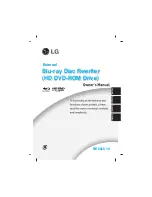
instruction
IMPORTANT ! please read the whole manual before
connecting the motors and external power supply.
Most DC motors are not polarized which means they
can rotate in both directions depending on the polarity
of the driving voltage. Some computer fans have built
in protection so they rotate only in one direction.
First connect the module to the bus board of your
modular, then connect the motors. Power up the
modular and then connect the power supply for the
motors. The motors should start to move according
to the settings of the knobs. If they don’t move,
disconnect the power supply for the motors promptly!
The module has two channels, A and B, which have
identical controls and connections. The power supply
is shared between both channels.
1
The power input jack has a standard 2.1mm power
plug with center-positive polarity. I.e. “+” is in the
middle, surrounded by “-“. The voltage should be 7.5
- 12 V DC. Please make sure that no part of the motor
power supply is touching the metallic front panels
of another module. This would connect the grounds
DC MOTOR can drive two DC motors. Motor driving
circuitry and CV input circuitry are optically isolated
without any ground connection. This avoids any possible
noise or power transfer between the motors and the
modular circuitry. The motors are driven directly from the
motor power supply, therefore the voltage of the power
supply has to match the specified voltage of the motors.
A
B
DC MOTOR
SPEED OFFSET
DIRECTION
ATTENUATOR
CV IN
M
O
T
R
R
O
POWER IN
2
1
3
4
DC M
o
to
r
5
6
D
U
AL
BIP
OL
AR
D
C
MO
T
OR
DRIVER
and noise transfer could occur. The power supply for the
motors should provide at least 1A, but the final current
consumption depends on the type of motors used! We
highly recommend to use modified PC power supplies
that are protected. Please see www.bastl-instruments.
com for more details.
2
The DC motor output connectors are standard power
plugs with a 2.1mm socket. Please connect each DC
motor to a connector that is already being driven (all
knobs to fully right position) and check if it is moving.
If it doesn’t, disconnect it immediately and look for
mechanical or electrical connection problems.
3
You can drive the DC motor in both directions with
variable PWM modulation to control its speed. With the
direction knob in the middle position, the motor should
stay still. Moving it to the right adjusts speed in one
direction and vice versa.
4
The speed offset knob sets how much speed offset is
added in the center point of direction knob. Most motors
start to move with some offset, depending of how much
force they need to produce.
5
The CV input with its CV attenuator affects the same
parameter as the directional knob. 0 volts on the CV
input means no adjustment to the settings. Positive
voltages adjust the direction control in one way and
negative in the other.




















